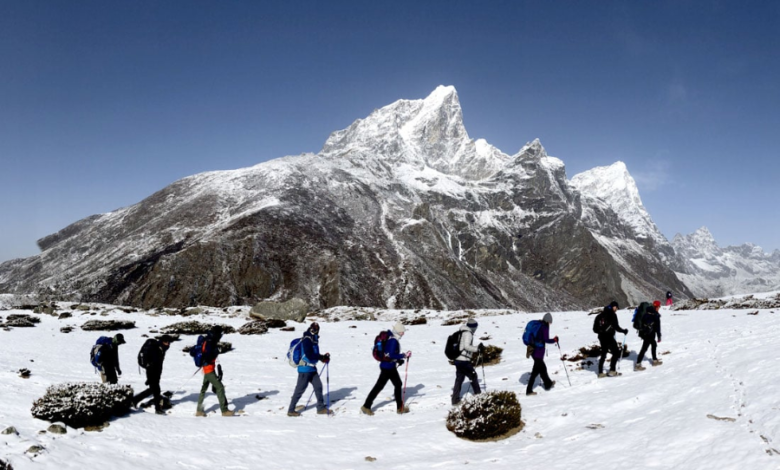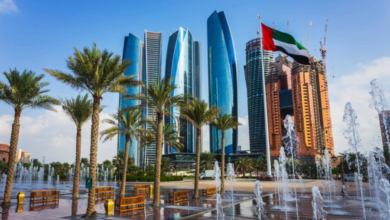Top Mistakes To Avoid On The Annapurna Circuit

The Annapurna Circuit is a life-changing experience, but not without its trials. Certain errors can severely downgrade your experience and safety, thus paying attention to common blunders can take your experience a long way. The biggest mistake is to not realizing how hard the trek is going to be. The breathtaking landscapes may ultimately attract a lot of trekkers however the camouflaged physical effort of high-altitude trekking is often overlooked. Preparation (long days of walking, different terrain and hot climates– make sure you are prepped up, not just physically but mentally too). And even more so, altitude that is the body needs time to adapt to the height and without it there may be critical problems with health such as mountain sickness. Planning for rest days and to not go up to fast is great thought.
Also, a mistake that people usually make is not using the right gear. Inappropriate footwear choice means blisters, soreness and perhaps, making your trip a sad experience. You need to get a high quality and well fitted trekking boots. Also, packing appropriate clothing and gear for changing weather is crucial. The weather can be extreme, and poorly prepared for cold or rain, money trekkers find themselves in discomfort and sometimes dangerous situations.
Byers: Not budgeting enough is one more mistake to avoid that can affect your trek. The Annapurna Circuit Hike has budget and mid-range options, however, it is always advisable to budget in for unwanted expenses, e.g., medical, or delays and changes in schedule caused by the weather, which can happen in a heartbeat. Extra cash will reduce your stress that you will be able to experience various local food without worrying about going over budget.
Not respecting local custom/culture is another mistake. The annapurna region is inhabited by many ethnic groups with different customs and practices. Thus, respecting these cultural aspects like wearing appropriate attire and asking for permission to take pictures go a long way in ensuring the goodwill that also enhances your experience.
Finally, going solo and not getting enough planning done can be a security concern. The majority of trekkers complete the circuit without a guide, but this is not recommended for anyone with no experience of trekking at high altitudes; in these cases, individuals should join a guided group or at the very least have a sound knowledge of the route as well as safe trekking practices. A local guide can improve your safety, offer additional ways to a variety of cultures and environments, and be able to pay for themselves—thereby enhancing your experience.
Knowing these mistakes helps trekkers to be more prepared and confident while heading for the Annapurna Circuit. While the journey will be full of stunning scenery, culture, development and growth, taking the time to plan and prepare well means that those experiences can be both enjoyable and secure. In the end, avoiding these mistakes enables trekkers to enjoy the magnificence and culture of the Annapurna region in all its glory and cherish their moments.
Section 1: Getting Ready for War
The Annapurna Circuit is where high-altitude trekking meets high-altitude beauty and preparation is an absolute necessity if you want a successful effort. The best prepared trekker is not only prepared with equipment but is also prepared in mind for the journey ahead. Part of that preparation is about understanding the route, and local culture and what your body will go through while trekking. It is also a critical part of the adventure, as the experience can be vastly different for different trekkers depending on their preparations beforehand. Good planning involves evaluating personal fitness levels and developing a training program based on endurance, strength and flexibility.
Also, knowing the signs of altitude sickness and how to minimize its impact can save your life. Packing wisely is also essential: having reliable, crucial gear stable, and not saddling oneself with superfluous items. Preparation goes beyond the physical; the trek itself often involves very unknowns, and mental willingness is just as critical in this endeavor. The preparation time will compensate for itself making trekkers satisfied with their overall experience with much confidence to enjoy the amazing views and cultural attractions on the Annapurna Circuit.
Overconfidence about the Impact of Height
You’d be surprised how many trekkers mess this up on the Annapurna Circuit Trek Cost but the most deadly is assuming altitude doesn’t affect you. Higher up the air is thinner, leading to less oxygen, which can cause a number of health problems, including altitude sickness. Symptoms can be anything from a trivial headache and fatigue to a life-threatening condition that necessitates an immediate descent. Such trekkers think that they will be fine if they keep moving, which is a mindset that can prove fatal. It is important to realize that altitude affects everyone differently, even people in peak physical shape can get symptoms.
Awareness of these early symptoms and the appropriate treatment i.e. descend, drink fluids, rest are critical. Also, knowledge of altitude sickness and its signs & symptoms is important. Learning about the body’s responses to high altitude can help trekkers make informed choices for the body. Seasoned hira-neembo wranglers promote slow paced progressive climbing with an acclimatization day now and again to accustom the body to extreme altitudes.
High-altitude trekking offers a rewarding experience, but trekkers must first recognize the dangers, ensure they have the necessary experience, knowledge, and proper equipment. By respecting the challenges of altitude and prioritizing safety, trekkers can minimize the risks associated with high-elevation trekking. Equipped with this understanding, they are better prepared to take on the Annapurna Circuit, leading to a safer and more enjoyable adventure.
Skipping Acclimatization Days
On an Annapurna Circuit with heights over 5,000 meters, missing acclimatization days can be crucial for trekkers. The first step is acclimatization, where the body copes with the lower oxygen levels at high elevations — a step necessary to prevent dangerous altitude sickness. Trekking is really challenging, and most trekkers are on a tight schedule where they have to complete the complete trek fast and therefore might end up trying to push through which is a wrong approach as you cannot adjust and adapt while on the go. Nevertheless, this might be unhealthy, and in turn, take away from the experience of the hike itself. By allowing your body some time to rest and come to terms with it, the body can adapt to it slowly and it reduces the chances of falling sick drastically.
Trekkers are advised to spend additional days in critical areas like Manang, where they can partake in low-impact activities to enable their bodies to acclimatize. Such a strategy helps with the physical acclimatization and also gives chances to get accustomed to the local people and surroundings. You must listen to your body, and if you find yourself with headaches or nausea, you need to take some time to rest! Increasing safety and the chance to get what you want on the Annapurna Circuit is simple – add acclimatization days to your itinerary and enjoy a successful and unforgettable trek!
Overpacking vs. Underpacking
Finding the perfect balance between too much stuff and not enough is a constant battle for trekkers on the Annapurna Circuit. In both of those scenarios, you are going to end up uncomfortable and dealing with some very serious logistical issues along the way. But carrying the extra burden usually makes way for sloppy weight that fatigues you and makes the hike less fun. While trekkers may have a natural inclination to pack additional clothes, gear, or supplies “just in case”, the pack becomes cumbersome. On the other hand, under-packing creates a shortage of the essential items that can spell disaster in remote regions where the process of re-supplying is challenging.
You might not have everything, enough clothes for changing weather, or necessary safety gear, which will endanger not only comfort but your life as well. The only way to avoid such pitfalls is to plan as carefully as possible. First thing is first and that is to have a proper packing list taking into account the essentials that will depend on the length of the trek, the weather in the planned area as well as your own personal needs. When dressing, think of ways to layer clothes so that you can adjust to the temperature without too much bulk.
Go for lightweight, multiuse, gear that meets multiple needs without adding additional weight. So, it is a good idea to reflect on your packing strategy from time to time as it can save you some trouble and give you a smoother trekking experience. By finding that middle ground, trekkers can ensure they are fully prepared for the experiences and challenges of the Annapurna Circuit without either overpacking or underpacking.
Ignoring Weather Conditions
Not Taking Weather Conditions into Consideration Simply ignoring weather conditions is a grave mistake that you can make while trekking the Short Annapurna Circuit Trek as it can affect your experience immensely. The weather in the Himalayas is often changeable, and individuals sometimes take their eyes off the ball Even though you must check forecasts prior to your trip, trusting exclusively on these forecasts can bring you to the wrong decisions. Conditions can wildly change over the course of the circuit and one minute the low altitude areas may be sunny when sweltering peaks can immediately collapse, into a snowstorm.
Anyone trekking in the region should learn about the season you are traveling and be ready for rapid changes. It can involve packing for all types of weather, including waterproof and thermal layers to ensure your comfortability and safety in varying conditions. Trekkers should also keep their plans flexible, with potential route changes and postponing ascents depending on how the weather looks. The key is to stay alert and listen to local guidance. This is actually very dangerous and can cause you to get stuck in a violent storm, which can impede progress and also be very dangerous. Trekkers should ensure they really respect the power of nature and prepare for its uncertainty, so as to have an enjoyable and safe time walking on the Annapurna Circuit.
Cultural norms — Just Do It → The Fifth Secret to Success
Why a Little Research on Cultural Norms before your Annapurna Circuit and Tilicho lake Trek is ImportantNot doing any research on cultural norms beforehand can lead to misunderstandings and missed opportunities for meaningful connections with local communities. The region enjoys an extensive mix of civilizations, mainly because of the various ethnic groupings made up on the ethnic set of different backgrounds with the nation.
Walking through these areas without a grasp of the local etiquette can be seen as bad manners. For example, it is useful to aware that in the most of the communities you need to wear modest clothes, especially if you go to temples and local houses. Exchanging greetings is also important; learning to say “namaste” and patiently observing non-verbal cues, like refraining from pointing with your feet, greatly helps build goodwill and accomplish tasks effectively.
Respectfully engaging with locals not only enhances your experience but also helps the preservation of their culture. Knowing things like asking permission before photographing individuals creates a feeling of better rapport as well. When trekkers take the time to learn about the practices and principles of the locals they interact with, they are more able to truly be a part of the experience as you will build a connection with the community that goes beyond just tourism. With a little time spent learning about the cultural context of the Annapurna region, trekkers can forge more meaningful experiences that enhance the trekkers experience and the communities visited along the way.
Rushing the Trek
One of the common mistakes while trekking on Annapurna Circuit is to rush the trek, which may lure you into danger. There is a tendency for many trekkers to have a completion deadline, forcing a rushed pace that often does not allow for true acclimatization or really enjoying the beautiful scenery. Annapurna region is a gem of trekking in Nepal, even beyond the stunning landscapes; full of local culture, and also other trekkers to meet and mingle with.
In an effort to cover as much ground as possible, trekkers often miss out on the smaller, more personal parts of the journey: Eating a home-cooked meal with locals, watching the sun go down from a pristine lake, sharing a bottle of local rice wine with your one-horse town guide—this is where the value of the experience lives. Additionally, hustling can lead to more tiredness and a greater chance of altitude sickness, and it takes time for the body to adjust to the decreasing air pressure as elevation climbs. Listening to your body and taking rest days is important and go at your own pace. Not only does this improve your enjoyment but it also enables you to engage better with the environment and people that you encounter. Allowing yourself to appreciate the journey makes memories and experiences that are more than just crossing off the trail.
Failing to Stay Hydrated
Not hydrating yourself is a very important mistake and one that can ruin your trekk on Annapurna Circuit. Needless to say, the higher you go, the more thirsty your body becomes, but most trekkers still forget this! The arid air of the mountains can cause rapid depletion of fluids and any kind of exercise only makes this process worse. Lack of Water: Dehydration leads to exhaustion, nausea, and headaches that not only impede performance but can heighten the risk of altitude sickness. If you do not feel thirsty during the day, you should still drink water, it is the most important drink of the day.
It is important to always have a refillable water bottle with you using water purification methods such as tablets or filter because in some places, getting clean drinking water is hard to find. You can also add some drinks that are rich in electrolyte can replenish the body with important minerals lost through sweating. For trekkers, keeping a lookout for signs of dehydration —like dark urine or dry mouth—can allow them to take measures before symptoms worsen. Staying hydrated not only helps to improve physical performance, but also allows trekkers to feel better overall while hiking. Keeping an eye on what you drink can lead to a more enjoyable, successful hike through the stunning scenery between the Annapurna mountains.
Choosing the Wrong Footwear
Wearing the wrong footwear is one of the more consequential errors one can make during the Annapurna Circuit to their health and quality of life. Footwear is one of the most important things for crossing the rocky paths, steep ascents and uneven ground. Trekking boots should provide good support, cushioning and also the traction to avoid slipping and falling. Wretched blisters, sore soles, even permanent damage if your footwear is inappropriate, ensuring it will not be a pleasurable experience. One very important thing is that you need to choose the boots long time before the trek, break them out in case they are too stiff. So you will not suffer during the hike.
So it makes sense for most trekkers to try many brands and models on to see what works best, in terms of choice of ankle support, weight, breathability, etc. And of course, we recommend the wearing of waterproof boots, for obviously, the weather can change very quickly in the mountains. Sock selection can also make a difference in comfort; moisture-wicking, padded socks tend to help eliminate blisters and aid in keeping the feet dry. In the end, investing in the right shoes goes beyond just comfort; indeed, it is a matter of safety and the ability to traverse the various terrains of the Annapurna circuit with confidence. This makes trekkers take the right steps toward an easier and smoother trekking adventure.
Neglecting Physical Training
Not training for the Annapurna Trek is something you should never do if you want to be safe and have fun. It is a difficult long-distance trek that demands endurance, strength and flexibility to tackle challenging terrain and high altitudes. A lot of trekkers mistake physical preparation and effort, thinking that they can tackle the trek just based on determination. There is no way around it though to handle long days of hiking and thin air at high elevation better, you must build a base level of conditioning. Simplistic training that encompasses trekking, cardio, strength, yoga/ Pilates and so on, multiple times a week is optimal.
Combine activities like hiking, running, biking, and resistance training to improve leg stamina and strength, while incorporating yoga or stretching to boost flexibility and reduce injuries. It helps to train with a loaded pack, at least part, of the hike since the trek will, of course, be with a pack on. In addition, mental preparation is critical as well; through training one can create a positive mentality and develop the resilience to work through difficulties that arise on the trail. A solid commitment to an all-around physical training program not only increases the likelihood that trekkers will successfully complete the Annapurna Circuit, but also enjoy a vastly more enriching experience in which trekkers can fully soak in the stunning landscapes and cultural treasures of this breathtaking region.
Overlooking Safety Gear
One of the most important things related to safety is neglecting safety gear, which is a big mistake that can affect your Annapurna Circuit trek a lot. Safety gear is not an afterthought; it is and a crucial element of a safe and enjoyable hike. All of which we frequently forget to pack are essentials like a first-aid kit and headlamp, trekking poles, and personal locator device.
A first-aid kit is very important, especially when traveling to a remote area because minor injuries or illnesses can occur but no medical doctor is available. A headlamp is also an essential item to ensure safe trekking during early starts or when delays can occur and dim light can present risky walking conditions. The steep descents you encounter while walking on rugged trails can be very tough on your joints, so trekking poles can help, providing stability and allowing you to take some of the weight off your knees, hips, and ankles.
Mucus bomb peppers quick able bowel buighting as well. Also a whistle and mirror for signaling in event of an emergency. All of these items help with safety and preparedness. And when you take the time to pack safety gear towards the start of your list, you can minimize the risks and fully experience the stunning nature and cultural experiences that the Annapurna Circuit provides. Keep in mind that the aim is not simply to finish the trek but to do so in safety and comfort, both for yourself and your companions.
Ignoring Local Advice
Ignoring local advice is one of the most serious mistakes and affects the quality of trekking on the Annapurna Circuit. They will have fundamental information on the geography, weather and cultural factors that can shape your experience as a tour. They have usually spent years living or trekking in the region, gaining knowledge like that of a local tour guide and sharing insights that can’t be found in a guidebook.
For example, locals can advise the safest paths to take, flag any hazards, or alert trekkers of the optimal times to depart to stay clear of adverse weather. They can also provide cultural context that adds depth to the experience, giving trekkers an understanding of local customs and traditions. Interactions with locals are not only good for the soul, they also lead to more meaningful exchanges and an unforgettable experience along your trek. So, keep an open mind to whatever they have to suggest and respect their knowledge. Through an appreciation of local guidance, trekkers might be able to face obstacles better and craft a more meaningful, immersive experience on the Annapurna Circuit.
Forgetting Emergency Contacts
A major mistake in regards to danger on the road to Annapurna Circuit is forgetting emergency contacts. Emergency First Aid is important, especially in remote areas, where medical assistance cannot be easily obtained quickly. Trekkers should prepare a list of emergency contacts before setting off on the trek; these should include local rescue agencies, local hospitals, and personal emergency contacts. Having this information handy—like in a waterproof bag or on your phone—can save you some crucial minutes if needed.
It is also a good idea to let family or friends know your trekking plans, including your route or if you have a plan of where you are, or when you expect to be back. That way someone knows where you are and when you should be back should the authorities need to be alerted. An insurance that covers trekking at high altitude is always a good idea, it gives you an extra safe feeling in case of accidents or emergencies. You will walk the Annapurna Circuit with confidence and peace of mind by making emergency contacts a top priority and ensuring that you have sufficient staffing backup in place.
Underestimating Budget Needs
Annapurna Circuit Trek- Common Mistake #1Underestimating budget needs Finding budget options along the trail is possible upfront costs for various things will add fast: more food, gear, or even medical needs. Trekkers must budget not just for lodging and meals, but also for the possibility of permits, transport, and gratuities for guides and porters.
Ensure you are budgeting for the possible contingencies; unexpected delays, such as poor weather, or being slow due to altitude sickness could add a whole week to your itinerary and bring with it extra costs. Be sure to include a cushion in your budget for unknowns. Extra cash or access to funds of any sort provides peace and allows more spur-of-the-moment excursions to the local site or other delights. After spending ample time to plan your budget wisely, when you are not worrying about money, you will appreciate trekking by beholding the magnificent view and cultural splendor of the Annapurna region.
Takeaways: Trek Smart and Enjoy Your Journey
The Annapurna Circuit is an outstanding trek that will allow you to enjoy not only spectacular scenery but also deep cultural immersion. But it is all about preparation and making wise decisions along the way that will make you successful on this journey. Trekking safely and enjoyably is a matter of avoiding common mistakes: Forgetting safety gear and local advice; or the calls for emergency and the need for extra funds. And when all the right preparation is done, one gains a deeper fulfilment from all the beauty and all the depth the region has to offer.
For example, the accumulation of the various tips and advice that come from the process of acclimatizing, hydrating oneself, and interacting with local communities embeds into the journey itself which brings about enduring and beautiful memories and connections. In the end, smart trekking keeps you safe but also makes your experience a lot better and helps make sure you return home not just with tales of towering mountains but also with melted lessons from the trail. Approach the Annapurna Circuit with respect, preparation, and an open mind, and you’ll create a unique experience that will stay with you long after you finish the trek.
Stay in touch for more uupdates and alerts visit: Forxinsider!




